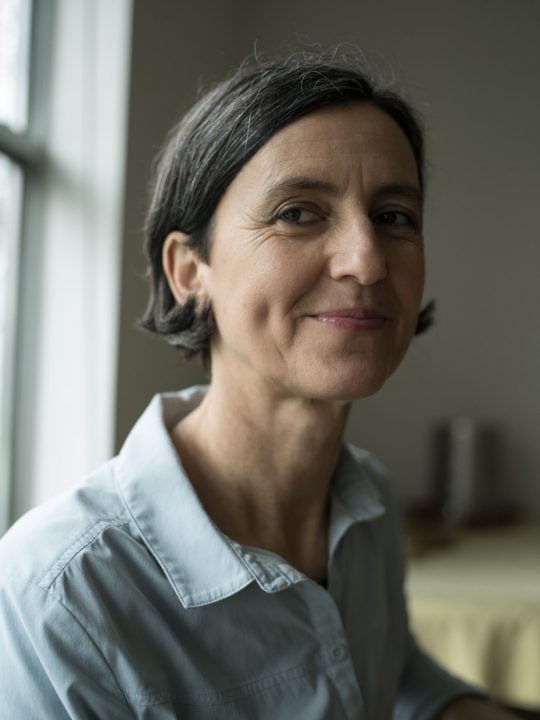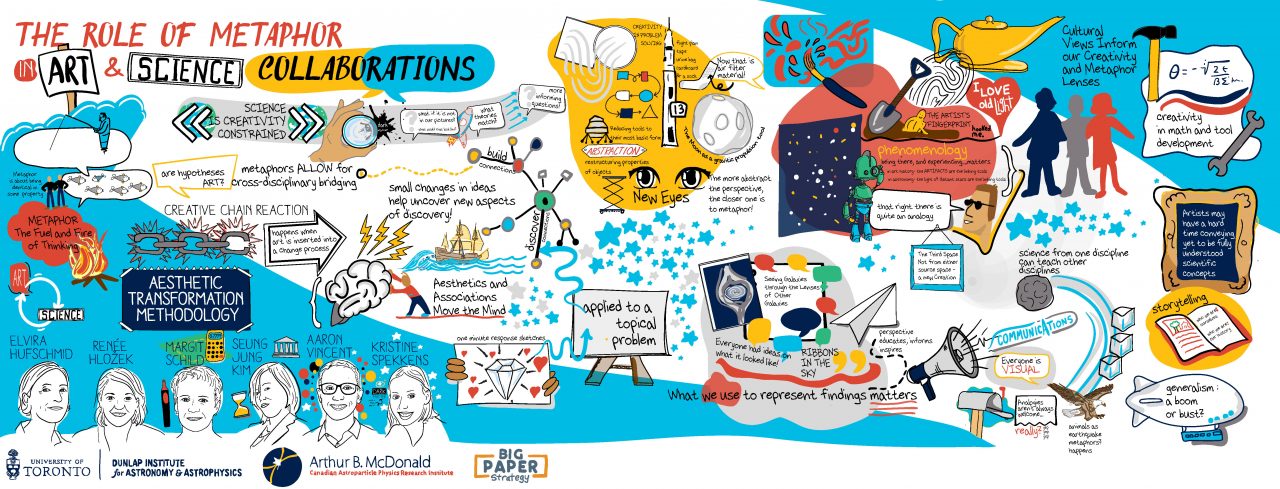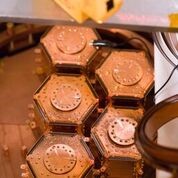
About Elvira
As an artist and process designer, Elvira has been working in the field of art and science collaborations for several years. Most recently she collaborated with artists, physicists and academics at Emily Carr University of Art and Design and the TRIUMF particle physics lab in Vancouver, BC, in a project titled ‘Leaning out of Windows–Art & Physics Collaboration through Aesthetic Transformations’ where she helped set up a design for interdisciplinary cooperation. She has worked in interdisciplinary teams before and organized talks and presentations.
As a Doctoral Research Fellow at the Agnes Etherington Art Centre in Kingston, Elvira prepared and facilitated a supporting program in form of a series of workshops for the ‘Drift: Art and Dark Matter’ (2021) project, an art & physics exhibition curated by Dr. Sunny Kerr (Agnes), in cooperation with Zac Kenny (McDonald Institute). In the workshops, titled ‘Understanding the World through Aesthetics’, an interdisciplinary team of researchers (physicists, artists, communication experts, scholars on multiliteracies, linguistics and creative processes) met with the goal to fathom the potential of art to inform idea-generating processes in science research.
Elvira’s interest in joining the cross-disciplinary internship program was a natural extension to the collaborative research experiments/workshops conducted in collaboration with the Drift organizers.
Project: The Role of Metaphor in Art & Science Collaborations
The goal of this project was develop tools to evaluate and facilitate how metaphor may act as a common code between art and science.
The research questions of the experiment were as follows:
- Is it possible to translate information from (physics-related) art into the realm of physics? Did inspiration cross disciplinary boundaries? Can physics take inspiration from physics -related art?
- Does an Aesthetic Transformation support cross-disciplinary collaboration in a meaningful way? Does the method carry the potential to inform and foster idea generating processes in the field of Astrophysics? Are new ideas generated in the process?
- What roles do metaphor and analogy play to shifting concepts into another category? Did a cross-domain mapping happen?
Aesthetic Transformation is not a fixed term. Elvira uses this term as a formula to describe a process of a collective and transformational form of research. An Aesthetic Transformation strategy serves to stimulate inter -or transdisciplinary dialogue.
In an Aesthetic Transformation process, participants pass on works to each other in a creative chain reaction, thereby transforming emerging ideas and concepts. An aesthetic response may come in the form of an image, sound, text or 3D formations and it provides for a comment on an original topic or a predecessor’s work. In the workshop experiment the physicists performed a transformation or translation step by responding to a chosen artwork from the Drift: Art and Dark Matter exhibition within a set of limitations and rules.
“Interdisciplinary interaction through Aesthetic Transformation promotes looking at a problem from an unusual angle and therefore may be a helpful tool in problem solving in science.”
Elvira’s CDI Experience

RoleOfMetaphorScienceCollabIllustration_Elvira-Hufschmid
"Discussions with students and with Prof. Hlozek led me to the conclusion that a creative brainstorming process through an Aesthetic Transformation methodology could be useful in the beginning stages of the research when a student searches for a research idea or a topic for a research paper."
In close communication with Prof. Hložek, the Dunlap Institute, and the McDonald Institute, Elvira created an Art & Science ‘Jam Session’ an opportunity to explore how art and science can work together through a creative process to generate new scientific ideas, improve scientific communication, and open potential pathways for innovation. In Aesthetic Transformation, ideas and concepts are passed on to each other in a form of ‘creative chain reaction’, promoting dialogue between disciplines.
This online event brought together physicists, artists, and members of the public for an interactive discussion on how artists and scientists can collaborate when metaphor and analogy may operate as ‘carrier substances’ between different fields of knowledge.
The ‘Jam Session’ included a panel discussion on the interdisciplinary potentials of astrophysics and art, featuring University of Toronto art historian and physicist Prof. Seung Jung Kim, artist Margit Schild from the Berlin School of the Provisional, theoretical astroparticle physicist at Queen’s University Prof. Aaron Vincent, and cosmologist and astro physicists at the Royal Military College Prof. Kristine Spekkens. The panel has been co-hosted by University of Toronto astrophysicist Prof. Renée Hložek and it was moderated by Queen’s University cultural studies scholar Elvira Hufschmid.
ASL interpretation has been provided for the event, and a summary ‘live drawing’ has been made available to all participants.

